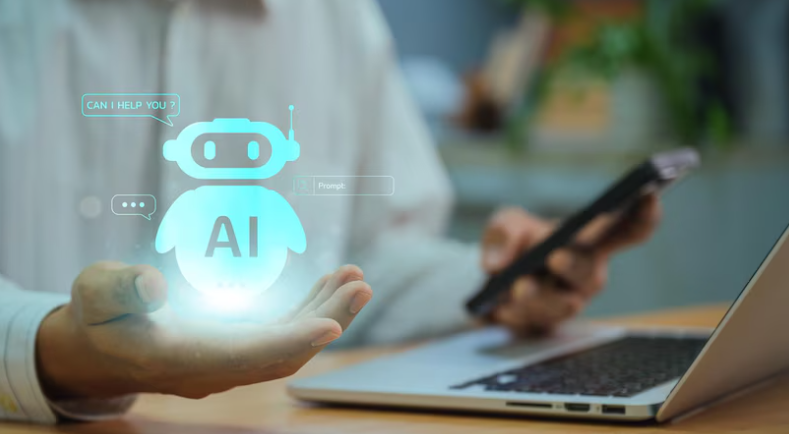Artificial intelligence (AI) has rapidly transformed various aspects of our daily lives, with AI-powered chatbots like ChatGPT at the forefront of this revolution. From customer service and healthcare to content creation and education, these sophisticated virtual assistants are making an indelible mark on numerous industries. This article delves into everything you need to know about ChatGPT, exploring its development, functionality, and the broader landscape of AI chatbot development.
Understanding ChatGPT
What is ChatGPT?
ChatGPT, developed by OpenAI, is an advanced language model based on the GPT-4 (Generative Pre-trained Transformer 4) architecture. It uses deep learning techniques to understand and generate human-like text, making it capable of engaging in meaningful and coherent conversations with users. The model is trained on a vast corpus of text data, enabling it to comprehend context, infer user intent, and provide relevant responses.
How Does ChatGPT Work?
At its core, ChatGPT leverages a transformer architecture, which employs mechanisms like attention and self-attention to process and generate text. The model is pre-trained on a diverse dataset that includes books, websites, and other text sources, allowing it to learn patterns, grammar, and contextual relationships in language. During fine-tuning, the model is further refined using supervised learning and reinforcement learning with human feedback (RLHF) to improve its accuracy and relevance in conversations.
The process involves:
- Pre-training: The model learns from a large dataset by predicting the next word in a sentence, given the preceding words.
- Fine-tuning: The model is adjusted using a smaller, more specific dataset and human feedback to enhance its performance in interactive settings.
Key Features of ChatGPT
- Natural Language Understanding (NLU): ChatGPT excels at comprehending and processing natural language, making it adept at understanding user queries and generating appropriate responses.
- Context Awareness: The model can maintain context over multiple turns in a conversation, allowing for more fluid and coherent interactions.
- Versatility: ChatGPT can perform a wide range of tasks, including answering questions, providing recommendations, generating creative content, and more.
- Accessibility: Available through various platforms and interfaces, ChatGPT is easily accessible to developers and users alike.
Applications of ChatGPT
Customer Service
One of the primary applications of ChatGPT is in customer service, where it can handle inquiries, resolve issues, and provide support 24/7. By automating routine tasks, businesses can reduce wait times and improve customer satisfaction.
Healthcare
In healthcare, ChatGPT assists in providing information about medical conditions, medications, and treatments. It can also help schedule appointments, send reminders, and offer preliminary assessments based on user inputs.
Education
ChatGPT serves as a valuable tool in education, offering personalized tutoring, answering questions on various subjects, and providing feedback on assignments. It enhances the learning experience by making educational resources more interactive and engaging.
Content Creation
Content creators benefit from ChatGPT’s ability to generate articles, blog posts, and social media content. The model can brainstorm ideas, draft outlines, and even produce complete pieces of writing, saving time and effort.
Personal Assistants
As a personal assistant, ChatGPT helps users manage their schedules, set reminders, and perform tasks like booking reservations or ordering groceries. Its ability to understand and respond to natural language commands makes it a convenient and efficient tool.
AI Chatbot Development
The Evolution of Chatbots
The development of chatbots has evolved significantly over the years, from simple rule-based systems to advanced AI-driven models like ChatGPT. Early chatbots relied on predefined scripts and limited user interactions, making them inflexible and unable to handle complex queries. The advent of machine learning and natural language processing (NLP) revolutionized chatbot development, enabling more sophisticated and responsive virtual assistants.
Key Components of AI Chatbot Development
- Natural Language Processing (NLP): NLP is crucial for understanding and generating human language. It involves tasks such as tokenization, part-of-speech tagging, named entity recognition, and sentiment analysis.
- Machine Learning (ML): ML algorithms help chatbots learn from data and improve their performance over time. Supervised learning, unsupervised learning, and reinforcement learning are commonly used techniques.
- Dialog Management: This component manages the flow of conversation, ensuring that the chatbot responds appropriately based on the context and user inputs.
- Knowledge Base: A robust knowledge base allows the chatbot to retrieve relevant information and provide accurate answers. It can be a static database or a dynamic system that updates in real-time.
- Integration with APIs: Chatbots often integrate with external APIs to perform tasks like fetching data, processing transactions, or interacting with other services.
Steps in Developing an AI Chatbot
- Define Objectives: Clearly outline the purpose and scope of the chatbot. Identify the target audience and the specific tasks the chatbot will perform.
- Choose a Development Platform: Select a platform or framework that supports chatbot development, such as Microsoft Bot Framework, Dialogflow, or Rasa.
- Design the Conversation Flow: Create a flowchart or script that maps out the possible interactions between the user and the chatbot. Consider various user inputs and corresponding responses.
- Develop the Chatbot: Use NLP and ML techniques to build the chatbot. Train the model using relevant datasets and fine-tune it to improve accuracy and performance.
- Test and Iterate: Conduct thorough testing to identify and fix issues. Use real user feedback to refine the chatbot and enhance its capabilities.
- Deploy and Monitor: Deploy the chatbot on the desired platform and continuously monitor its performance. Regular updates and maintenance are essential to ensure optimal functionality.
Challenges and Future of AI Chatbots
Challenges
Despite their advancements, AI chatbots like ChatGPT face several challenges:
- Understanding Complex Queries: While chatbots can handle many tasks, they may struggle with ambiguous or highly complex queries that require deep domain knowledge.
- Maintaining Context: Sustaining context over long conversations can be challenging, leading to potential misunderstandings or irrelevant responses.
- Bias and Ethics: AI models can inadvertently learn and perpetuate biases present in training data. Ensuring ethical use and mitigating bias are critical considerations in chatbot development.
- Security and Privacy: Protecting user data and ensuring secure interactions are paramount, especially in sensitive areas like healthcare and finance.
The Future of AI Chatbots
The future of AI chatbots holds immense potential, with several exciting developments on the horizon:
- Improved Contextual Understanding: Advances in NLP and deep learning will enable chatbots to better understand and maintain context, leading to more natural and coherent conversations.
- Emotional Intelligence: Future chatbots may incorporate emotional intelligence, allowing them to detect and respond to users’ emotions, enhancing user experience and engagement.
- Multimodal Capabilities: Combining text, voice, and visual inputs, chatbots will become more versatile and accessible, catering to a broader range of user preferences and needs.
- Personalization: AI chatbots will increasingly offer personalized experiences, tailoring their responses and recommendations based on individual user profiles and behaviors.
- Integration with Emerging Technologies: As technologies like augmented reality (AR) and virtual reality (VR) evolve, chatbots will integrate with these platforms to provide immersive and interactive experiences.
Conclusion
ChatGPT and the broader field of AI chatbot development represent significant advancements in artificial intelligence, transforming the way we interact with technology. RichestSoft delivers comprehensive insights to create powerful AI-driven chatbots for business success. From enhancing customer service and healthcare to revolutionizing content creation and education, AI-powered chatbots are becoming indispensable tools in various sectors. As technology continues to evolve, we can expect even more sophisticated and capable chatbots, further bridging the gap between human and machine interactions. Embracing these innovations while addressing the associated challenges will be key to unlocking the full potential of AI chatbots and shaping a smarter, more connected future.





